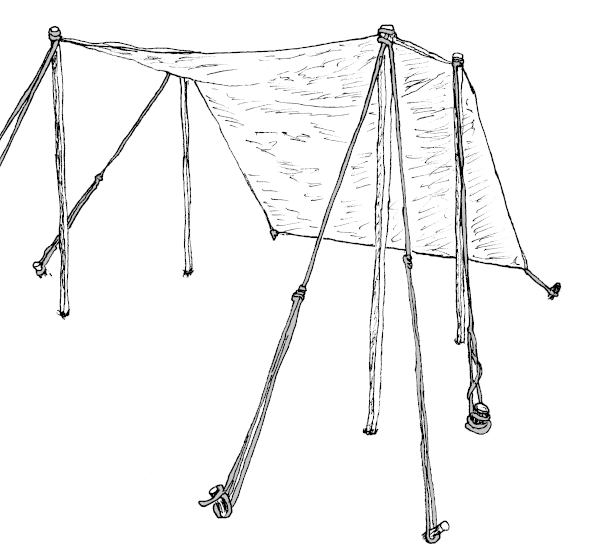
Figure 1: Canopy.
| Home | Equipment | Ropemaking |

Figure 1: Canopy.
A canopy isn't necessary if you are a blanket trader, or just doing a one day demonstration. But a little bit of shade and weather protection for you and your gear can justify the weight and cost.
Additionally, the poles make a convenient place to hang tools and materials.
There are many different canopy designs. I don't claim this one is any better than any others. In fact, it has some shortcomings. It isn't very tall, and the flat portion will collect rain. However, this design doesn't require any sewing or serious carpentry.
This was just a make-do solution for a fast approaching market fair, using things I had around the place. The "temporary" solution has been in use for several years now.
Treat these plans more like guidelines than actual directions.

Figure 2: Tent Stake.
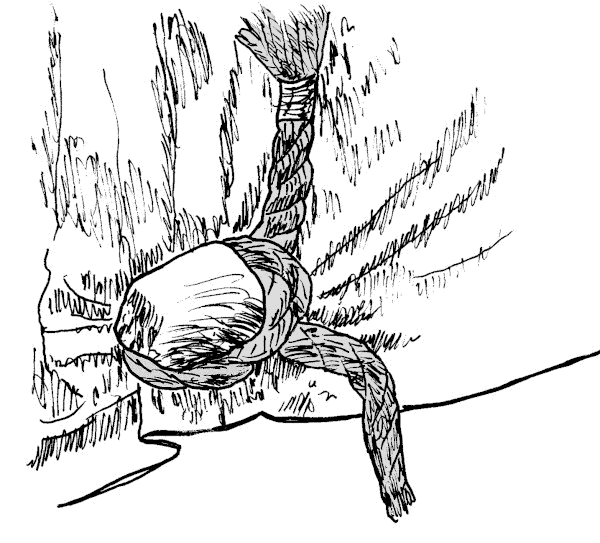
Figure 3: Anchor Tie Point.
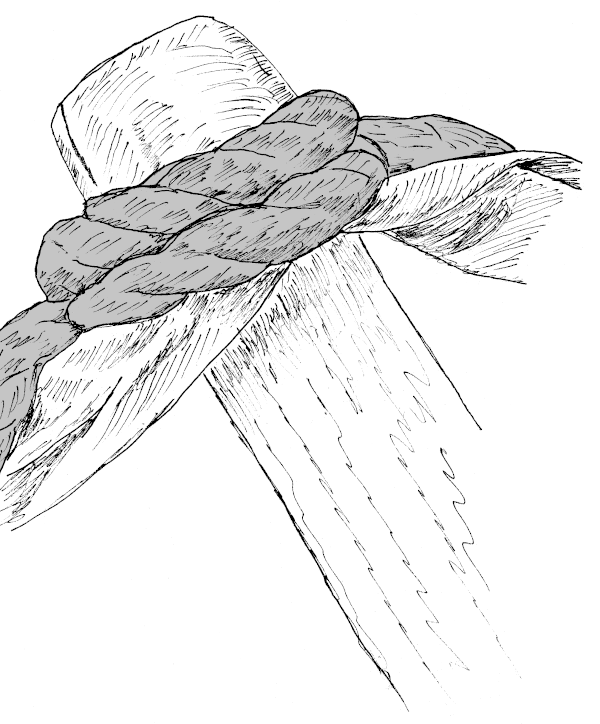
Figure 4: Canvas Tied over Pole Top.
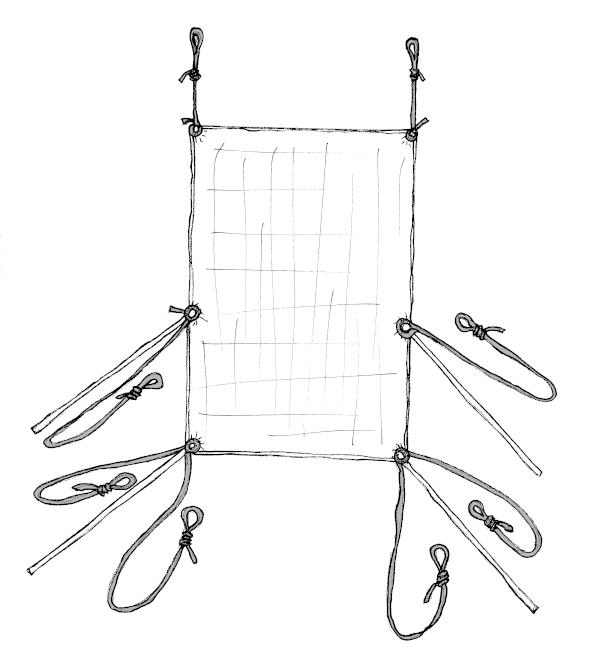
Figure 5: All the Parts Assembled.
That's it.
To set up the canopy:
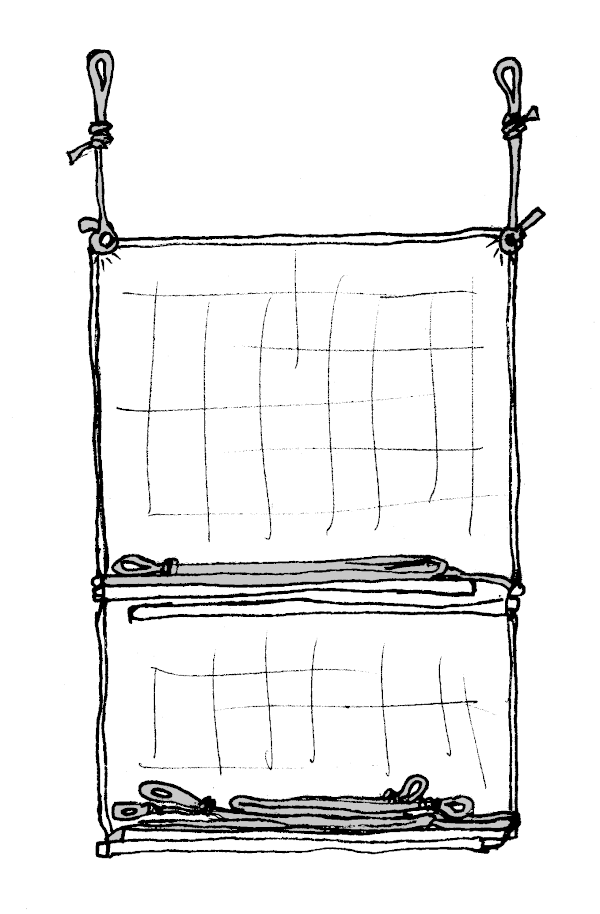
Figure 6: Canopy Ready to be Rolled.
When taken down and rolled up, the canopy makes a bundle seven and a half feet long, eight inches in diameter, weighing 20 pounds.
It is important not to touch the inside surface of any canvas tent when it's raining. That'll cause an immediate leak. Just in case you forgot.
If rain is ponding on your canopy, pull the foot of one of the front poles, and dump the water that way. Don't try to push the center of the sag up.
If the weather looks really bad, you can move all your gear under the canopy, drop the front poles, snug up the front anchor ropes, and turn the canopy into an "A" framed tent that does a better job of shedding water.
All you need is a loop of rope, and a metal hook. You can make a large grommet (ABOK[040] #2864), splice a loop sling (ABOK[040] #2861), or if you are in hurry, just tie a loop in a piece of rope.
NOTE: Do NOT use a knotted loop for climbing or very heavy loads, as the knot might fail. In those cases, a properly formed grommet must be used. A knotted loop is safe for hanging clothes, balls of twine, or tools.
It is worth the time learning to make grommets.
For a tied rope loop:
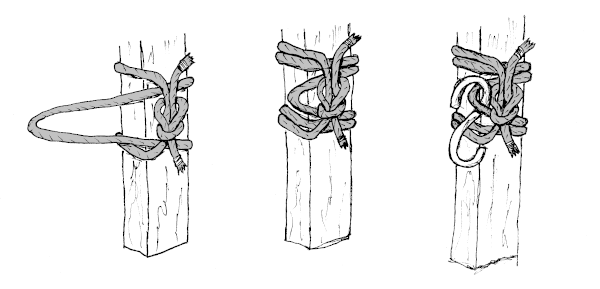
Figure 7: Hanging a Hook.
You've just made a Prusik hitch. (ABOK[040] #1763)
This will hold a surprising amount of weight. The
more weight, the tighter the grip. Mountain climbers
use this hitch to ascend a fixed rope.
When you are done, just slip the hook out of the loop, and un-wrap the loop from the pole. Easy.
Herreshoff Marine Museum (20 August 2020)
Rope Grommets.
Accessed 18 July 2021 from
https://herreshoff.org/2020/08/diyropegrommets/
| Colophon | Contacts |